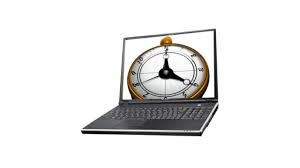Today’s bragging rights seems to not be about who has the greatest car, but more about who’s the busiest. We all want to do more in less time. After all, productivity and billings do matter. But patient experience and work-life balance matter too.
 Here are some ways that technology may help lighten your medical office workload by helping to create effective workflows, reducing downtime, increasing productivity and hopefully providing a better patient experience.
Here are some ways that technology may help lighten your medical office workload by helping to create effective workflows, reducing downtime, increasing productivity and hopefully providing a better patient experience.
Promote mobility
While most medical professionals work primarily from their medical offices, it also helps to have the freedom to work from anywhere — whether in the office, at home, or even while travelling. Such mobility is best supported by dictation and transcription workflows that leverage centralized enterprise software. This allows medical professionals to securely dictate and receive documents while not in the office, using either a digital audio recorder or an app on their smartphones. They can also check the status of dictations and transcribed documents on their smart phones.
Furthermore, web access features let transcriptionists retrieve and transcribe dictations online from any computer with internet access. As well, physicians can now edit, approve and electronically sign their documents and securely fax them to referring physicians. The result is a faster, seamless workflow — regardless of where team members are located.
Ease of data access and data protection
An internet-based workflow does more than just enable mobility. It also ensures that all of the transcribed documents that make up the patient’s medical records are always available, safe from computer crashes and mobile hackers. Moreover, automatic backup functions protect data against accidental loss. Audio files that are encrypted when they are sent, received and stored — can keep clients’ confidential data highly secure in every situation. However, it doesn’t guard against internet interruptions.
Maximize productivity
Digital dictation and speech recognition technologies can help medical professionals maximize every minute. Most medical professionals (as do most of us) speak seven to ten times faster than they can type and are usually highly skilled verbal communicators, which is ideal for letting your voice do the work.
Any time that medical professionals spend typing documents detracts from the time and energy they have to serve their patients and grow their practices.
Speed up turnaround times
Ask your medical transcription company if they can offer “back-end” speech recognition. It can speed up transcription turnaround time without altering your office’s workflow. It all happens in the background. You dictate as usual. The audio files go through speech recognition software and are converted to text before transcriptionists receive them. Transcriptionists get already-completed first drafts of the documents, which allows them to then listen to the audio files and make corrections. However, not all speech recognition systems are created equal. Unfortunately, from a medical transcriptionist viewpoint, sometimes it’s easier (faster) to re-type off-the-shelf versions of speech-recognition documents rather than spending more time to edit poor quality documents with formatting issues. Typically enterprise systems (used by transcription companies) have intuitive learning modules. So with an enterprise system, when you dictate ‘ellipsis’, the system learns to put ‘…’, and not type the word ellipsis.
Reduce routine workflow burdens
How much time does your staff spend faxing letters to referring physician’s offices? Does your transcription company offer additional services, such as automatically faxing documents that the physician (or medical professional) has signed off on. Check out AUTOfax at 2Ascribe.com for a time saving solution compared to having staff manually fax referral letters and reports.
By embracing technological advances, medical professionals can better serve their patients. So, yes, technology can help lighten your workload, improve workflow and help with improving the patient experience.
2Ascribe Inc. is a medical transcription services agency located in Toronto, Ontario Canada, providing medical transcription services to physicians, clinics and other healthcare providers across Canada. Our medical transcriptionists take pride in the quality of your transcribed documents. WEBscribe is our client interface portal for document management. 2Ascribe continues to implement and develop technology to assist and improve the transcription process for physicians and other healthcare providers, and recently introduced AUTOfax. AUTOfax works within WEBscribe to automatically send faxes to referring physicians when a document is signed off by the healthcare professional. As a service to our clients and the healthcare industry, 2Ascribe offers articles of interest to physicians and other healthcare professionals, medical transcriptionists and office staff, as well as of general interest. Additional articles may be found at http://www.2ascribe.com.


